Following His Decade-Long Tenure At Issey Miyake, Yusuke Takahashi Pivots To Launch His Own Brand
Upholding the core values of simplicity, modesty, responsibility and timeless approach to fashion with CFCL — Clothing For Contemporary Life.
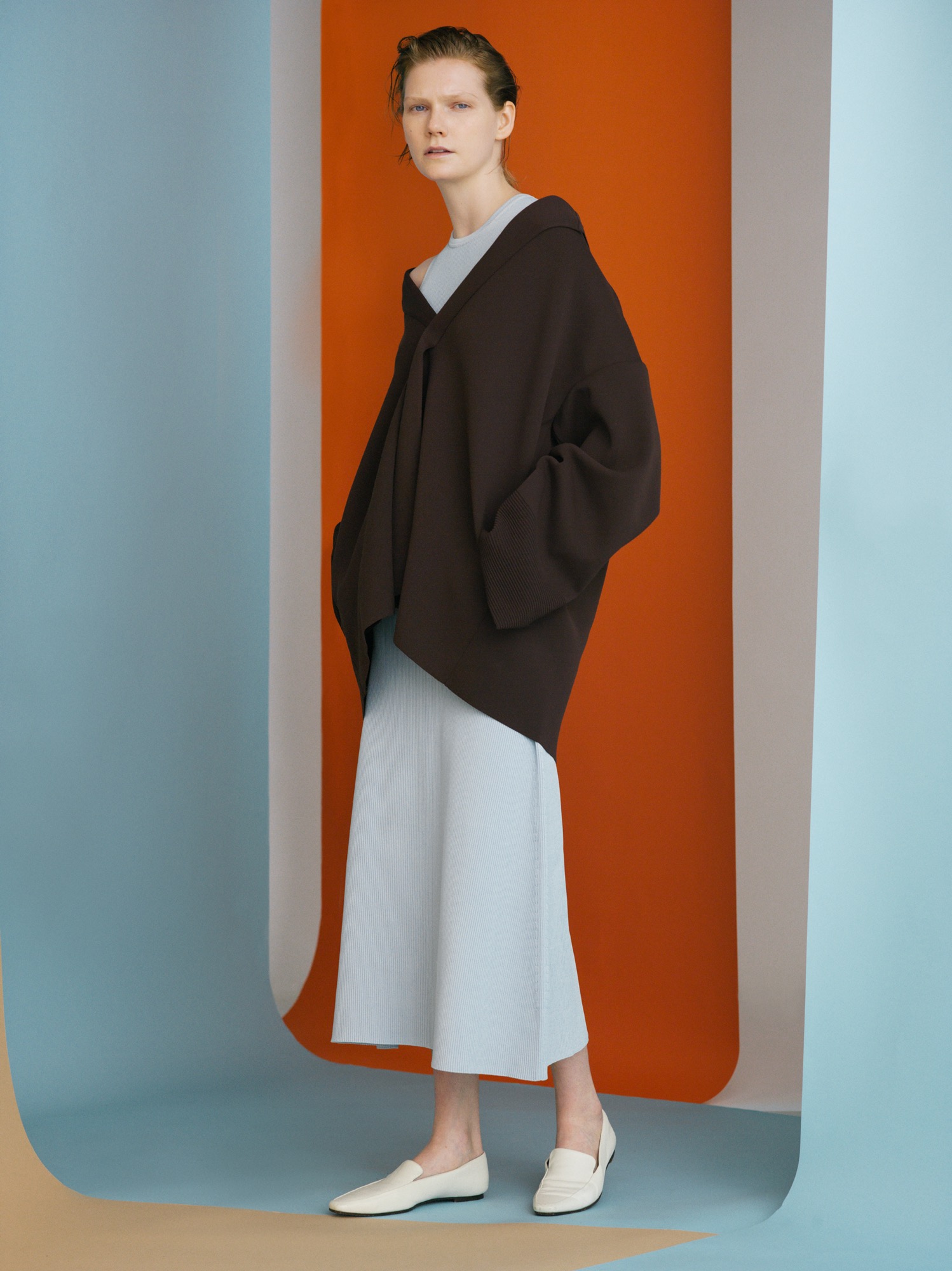
Ever since Yusuke Takahashi announced his departure from Issey Miyake Men one year ago in 2020, the Japanese designer was toiling on his idea of launching his own label and bringing his idea of an ideal brand for the contemporary consumer to life.
“Ever since I was a student aspiring to be a fashion designer, I wanted to start my own brand someday,” Takahashi shared. “I had also decided to make 3D knit dresses as my core item, which I researched during my school days. It took exactly one year from the time I told the company that I was resigning to the time we launched the first collection.”
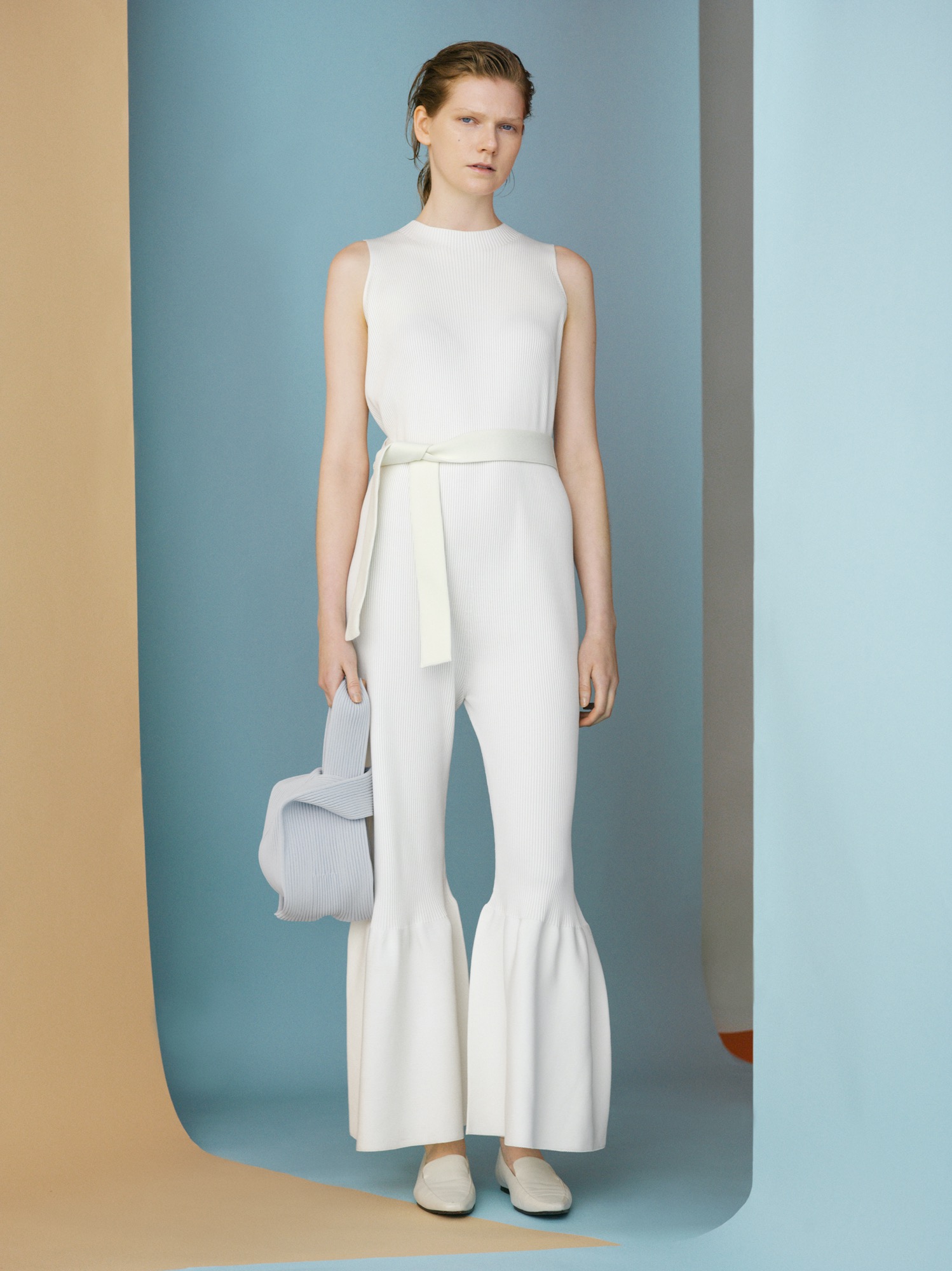
The label launched under the moniker CFCL — an acronym for “Clothing For Contemporary Life” and a brand statement all at the same time. Upholding the core values of simplicity, modesty and responsibility backed by the timeless approach to fashion, Takahashi developed a tight edit of 3D, computer-developed knitwear using certified, sustainable polyester yarns and state-of-the-art technology — approaching fashion with care for consumer and the environment. After a decade of working under the eponymous fashion designer and notably taking the post of artistic director of Issey Miyake Men in 2013, the designer went on to realize his long-time dream of launching his own label making computer-program knitting (which he has been fascinated with for a long time) the main focus of his work moving forward.
“As AI takes over all kinds of simple tasks, more creativity is required, the boundary between private life and work life is diminishing, so I want to create clothing that is versatile and gives people the freedom to move effortlessly through all areas of their daily lives,” he explained. “I want people who are positive and adaptable to such changes to wear CFCL and who appreciate style, comfort and ease.”
The collection is now up for its official Spring/Summer 2021 launch and has already been picked up by nearly 40 retailers worldwide, including SSENSE, Isetan, SKP, United Arrows, Galeries Lafayette and Tomorrowland. The range will also be sold on the brand’s own e-commerce website, available from February 1 onwards.
In honor of the new launch, V spoke with Takahashi about his upbringing, how his childhood experiences shaped his design process and what he envisions the future of this brand will be like in years to come. Read the full interview below:
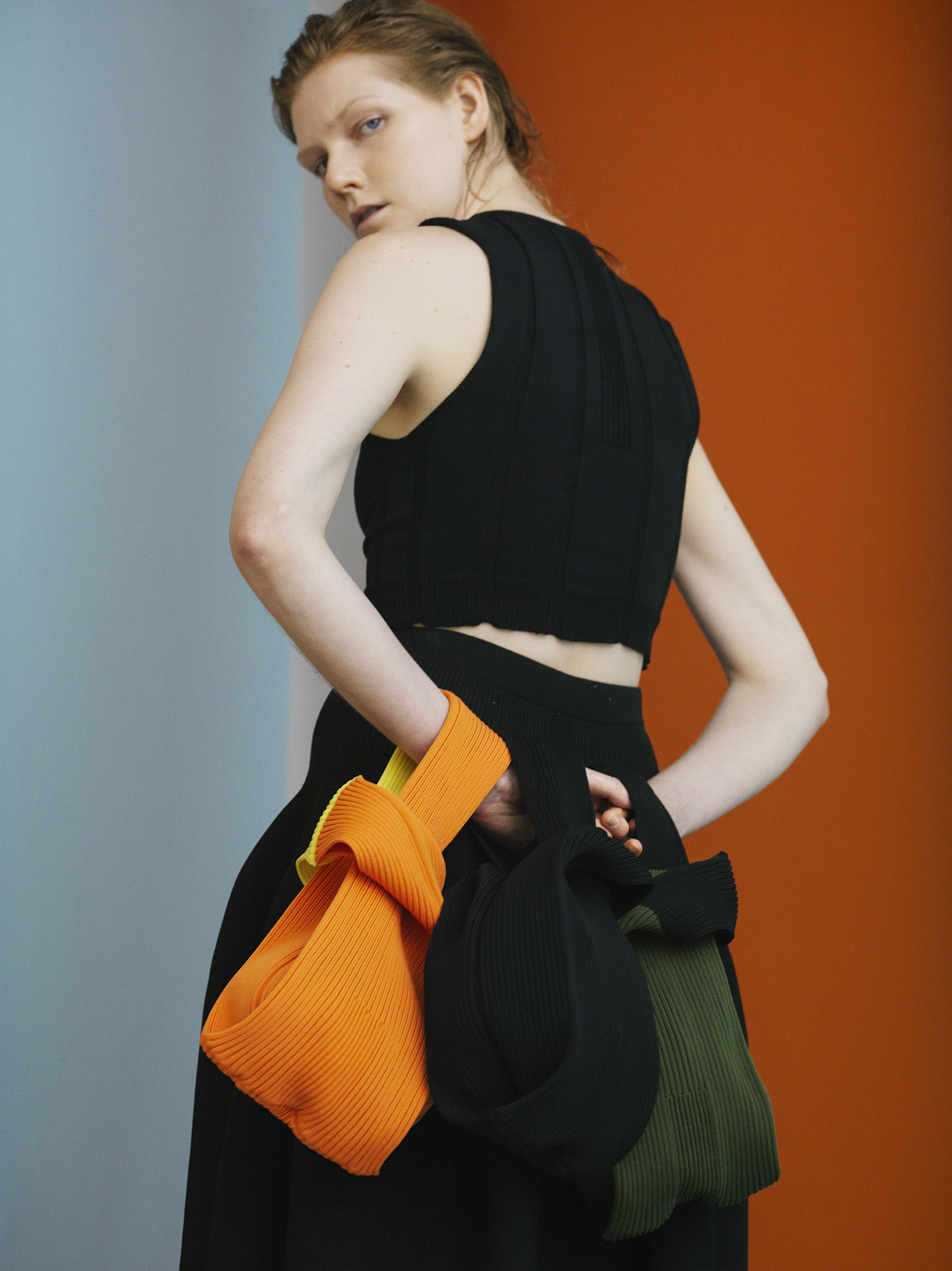
V MAGAZINE What community did you grow up around? How did that shape you?
YUSUKE TAKAHASHI I was born in Tokyo — an only child to a doctor and lawyer father and a fashion journalist mother. Both of my parents worked and traveled a lot, so I was often placed at my maternal grandparents’ house. Influenced by my grandfather, who was an architect, my dream as a child was to become an architect as well. When I was six years old, my mother was diagnosed with cancer, and she took that as an opportunity to become a socially conscious writer on issues such as medical care and the environmental destruction caused by public works projects. She continued to deal with those social issues until just before her death at the age of 56. I grew up watching my mother, who was a strong liberal woman, and with the birth of my daughter last year, I began to think about my responsibility to the next generation.
V You said that the foundation of your design process always starts with examining how people live. Are there any specific aspects of people’s lifestyles that interest you the most?
YT I believe that design is a means to make our daily lives more comfortable and that products, architecture, and clothing all have something in common. I always try to be aware of how lifestyles are changing and also try to be a little closer to the future life. For example, in recent years, people’s desires have shifted from entity-oriented consumption to situation-oriented experience, and AI and IoT are accelerating this shift. At the same time, ethical values as represented by the SDGs(Sustainable Development Goals) have become more widely accepted and championed by the general public. I am interested in all of these issues, and also interested in thinking about what the appropriate styles, forms, materials, and details are in these changing times.
V You have worked as a men’s designer for Issey Miyake for the past seven years. How did this experience influence the way your aesthetic and design philosophy, if at all?
YT I was able to learn design for 10 years under Mr. Issey Miyake. I believe that my answer to 2. is a thought that came out of my 10 years of dialogue with him. I believe that a good designer should always try to be creative, but at the same time be aware of the role he/she can play in making society a better place.
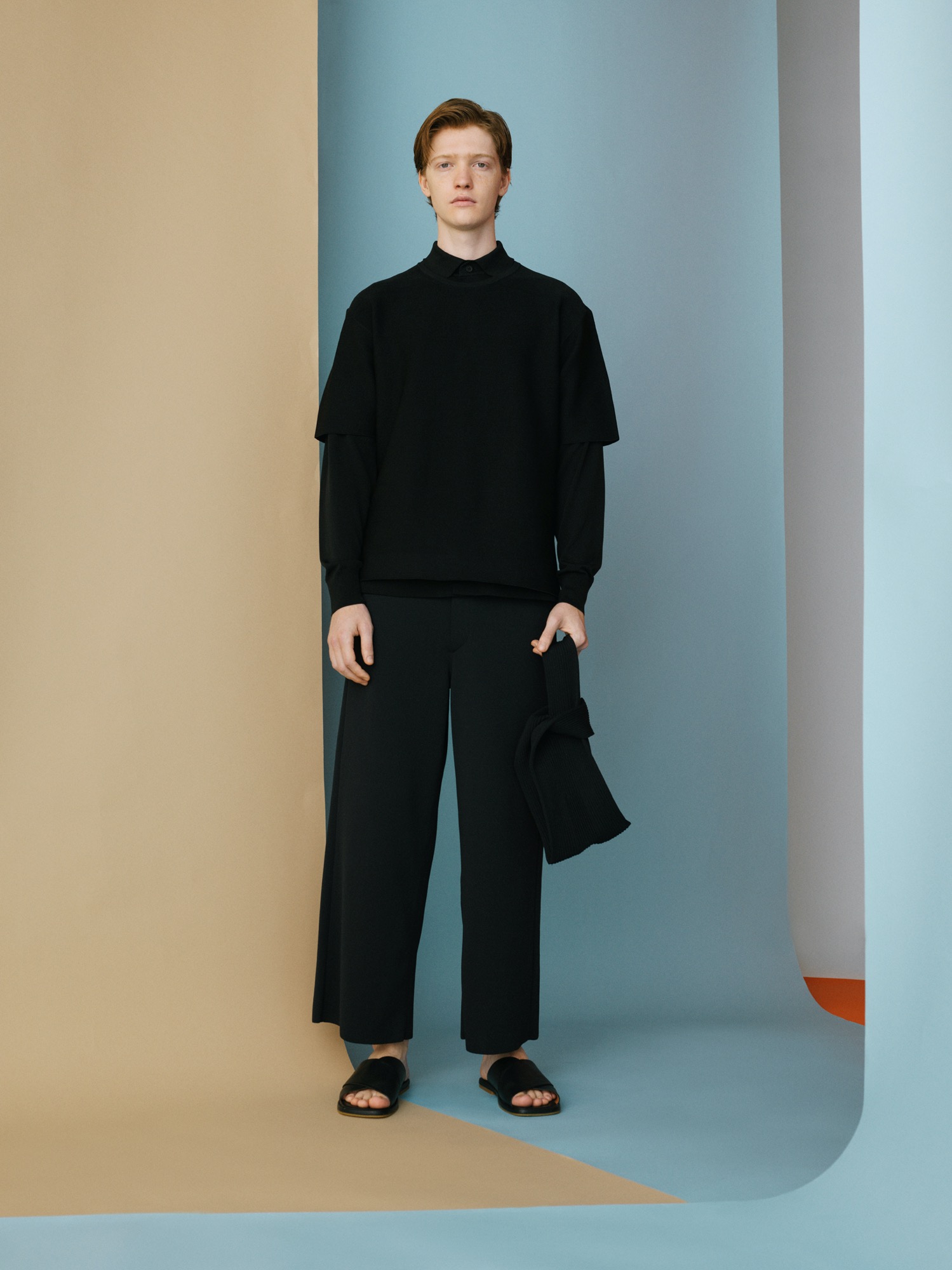
V Your design background is rooted in menswear — how does it about designing garments for both men and women from now on?
YT What is the difference between menswear and womenswear today? There are women with strong bones, and there are men with slender figures. Gender has nothing to do with what design people like, nor should it. Of course, there are few men who wear dresses and skirts, so we design them with the idea of making women look beautiful. Other than that, we see no difference between men and women. Sizes 1, 3, and 5 are available, with 1 being designed for 160cm, 3 for 170cm, and 5 for 180cm. Because of the stretchy nature of knitwear, we use height as the basis for our designs, not gender.
V What is your “mission statement,” with CFCL and beyond?
YT CFCL is an acronym for “Clothing For Contemporary Life”, which is a brand statement without my own name. I referenced the architectural firm OMA and the art museum MoMA. The following is a detailed description of CFCL’s statement: “Simplicity, modesty and responsibility are the values the brand heralds. Designed for men and women following a timeless approach and ethos, CFCL consists primarily of 3D, computer-developed knitwear using certified, sustainable polyester yarns and state of the art technology. CFCL assesses knitwear as a progressive laboratory for innovative fashion-making that matches the needs of contemporary life with products that are sophisticated as they are easy to maintain.” Society faces many issues and they are all intertwined, I think. One righteousness can be seen as evil when viewed from another side. It would be impossible to send out a statement that is beneficial in all directions. All I can do is use my skills and knowledge (e.g., using synthetic fibers, working with local Japanese industry), stay rooted in the culture I grew up in (Tokyo and other communities), and try to make life better for everyone within my reach.
V CFCL garments are mostly made of 3-D, computer-developed knitwear using sustainable yarns. Is sustainability in fashion and design has always been something that interested you?
YT I have been aware of environmental issues since I was a child because of my mother. In the past, economic growth and sustainable activities were generally considered to be in conflict with each other, and I experienced the difficulty of balancing the two while watching my mother’s struggles as a child. What changed my mind was Greta Thunberg’s activities in 2018. At the same time, it brought back memories of how I felt the world was full of contradictions as a child in elementary school. From that moment on, I couldn’t turn a blind eye to all the waste prevalent in the apparel industry and decided that I should start my own business, no matter how small.

V What role do you want technology to play in the design and production processes at CFCL?
YT There are two things: First is to save energy and minimize waste in creation. We create design and request sheets on iPad, and then the factory creates products from yarn using computerized knitting. There are no fabric racks, cutting desks, or even large printers in our office. We will do as much of the work as possible online, introduce remote work and flextime, and promote a work style with little overtime. The second is to revitalize the local community. Most of Japan’s apparel companies have moved their production to countries with lower labor costs. As a result, more than 95% of Japanese clothes are made overseas, and the former vitality is no longer present in the production areas. As a Japanese company, we believe that we should contribute to the local industry in Japan, and this is made possible by full automation such as computerized knitting. I believe that we need technology that can be sustained even with high labor costs.
V Can you talk a little bit about why you refer to garments in this first collection as “Knit Ware”? What’s the significance of using the word “ware” here?
YT “Knit Ware” is a combination of the word “knitwear”, and the fact that the seamless 3D knitwear has a ceramic-like appearance. The title of the first season is both the season’s theme and the brand’s statement. For CFCL, clothes are the ware (vessel) that enwraps the body. Ware for serving tea, and food and holding flowers, have been used for thousands of years as tools to keep their shape and to carry them, but they also play a supporting role to enhance them or to create the situation. I believe that clothing should also play a supporting role in the same way that those ware do.
V What kind of person do you envision wearing your garments? What do you want people to think and/or feel when they’re wearing them?
YT At CFCL, we always keep in mind that our clothing should be relaxing and easy to care for, but it should also be suitable for many occasions. In other words, it is designed to be worn for business and personal occasions. The way we work has changed a lot in the past few years, and it will change even more. As AI takes over all kinds of simple tasks, more creativity is required, the boundary between private life and work life is diminishing, so I want to create clothing that is versatile and gives people the freedom to move effortlessly through all areas of their daily lives. I want people who are positive and adaptable to such changes to wear CFCL and who appreciate style, comfort and ease.
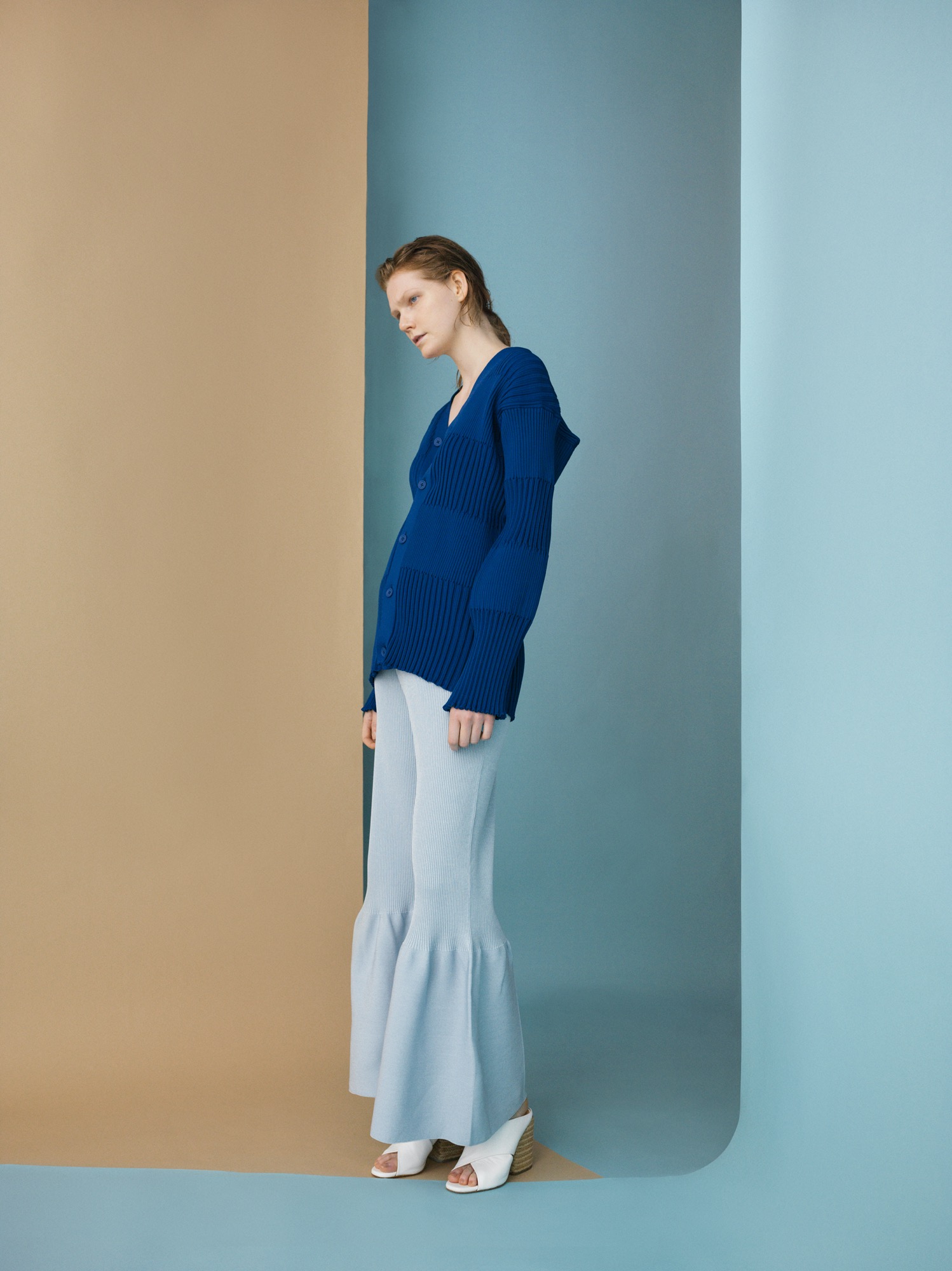
V The brand has not even made its official launch yet, and you are already getting into big retailers such as SSENSE, Galeries Lafayette and Tomorrowland. Why do you think these big retailers take interest in these simple, elegant yet functional garments?
YT I think 2020 may have been the year of a major change in values. Many retailers tried to rethink the value of fashion as it had been in the past. It is important for buyers that the brand has a reason why it is needed in the current era, rather than their buying based on just a feeling. Designers need to be able to explain “why this clothing is needed now,” and they need to show it with their clothes. I think I was able to show that to them.
V What are your hopes for the future? How would you like to see the brand grown and develop over the next few years and later down the road?
YT As a business, I do not set specific numerical goals, but I believe that expansion to a certain scale (recognition) is necessary. This is because I want to create an environment around me where as many people as possible can envision a hopeful future. Many problems can be solved if enough people are aware of them. I, therefore, believe that I need to create a business where I can confidently pass the baton of generation to my daughter and grandchildren.
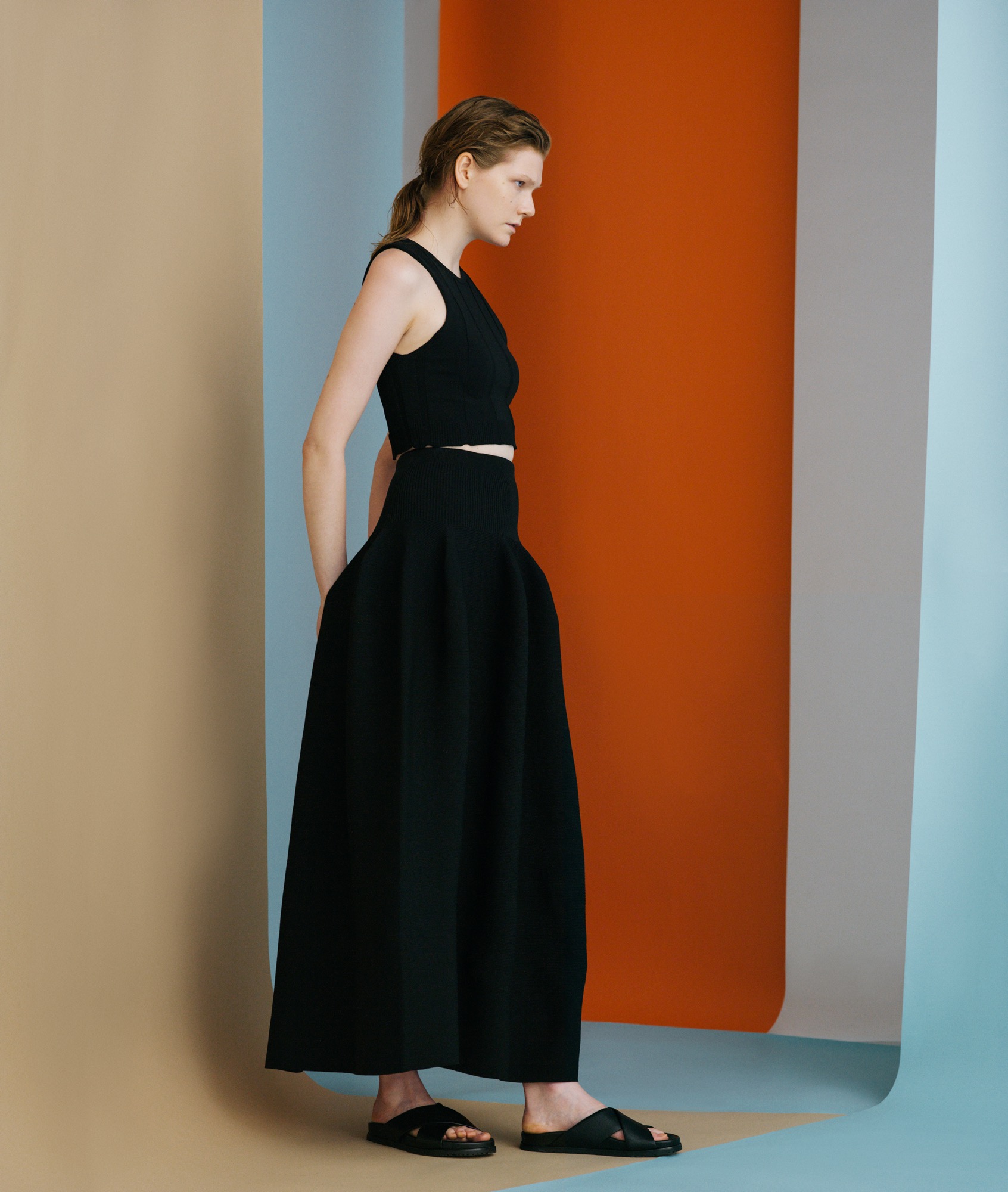
Discover More
